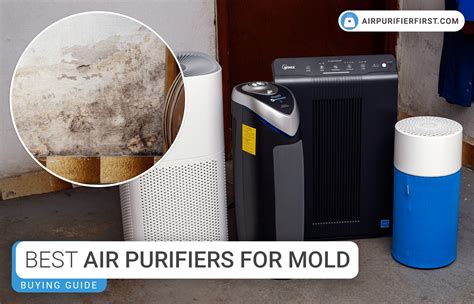Indoor air quality is a major public health concern. The Environmental Protection Agency (EPA) estimates that Americans spend 90% of their time indoors, where the air can be two to five times more polluted than the outdoor air. One of the most common indoor air pollutants is mold. Mold spores can cause a variety of health problems, including allergies, asthma, and respiratory infections.

Air purifiers and mold testing are two important tools for improving indoor air quality. However, they serve different purposes. Air purifiers remove pollutants from the air, while mold testing identifies the presence of mold and the extent of the contamination.
How Air Purifiers Work
Air purifiers work by using a fan to draw air through a filter. The filter traps pollutants, such as mold spores, dust, and pollen. The clean air is then released back into the room.
There are a variety of different types of air purifiers on the market. Some air purifiers use a HEPA filter, which is a high-efficiency particulate air filter. HEPA filters are very effective at removing mold spores from the air. Other air purifiers use a carbon filter, which is effective at removing odors.
How Mold Testing Works
Mold testing is used to identify the presence of mold and the extent of the contamination. There are two main types of mold testing:
- Air sampling: This test measures the number of mold spores in the air.
- Surface sampling: This test checks for mold on surfaces, such as walls, floors, and furniture.
Mold testing is important because it can help you determine if you have a mold problem and how severe it is. If you have a mold problem, you will need to take steps to remediate the mold and improve the indoor air quality.
Air Purifier vs. Mold Testing: Which One is Right for You?
The best way to determine if you need an air purifier or mold testing is to talk to a qualified professional. A professional can assess your indoor air quality and recommend the best course of action.
In general, air purifiers are a good option for people who want to improve the overall air quality in their homes or offices. Mold testing is a good option for people who are concerned about mold exposure.
Benefits of Air Purifiers
Air purifiers offer a number of benefits, including:
- Improved air quality: Air purifiers remove pollutants from the air, which can improve the overall air quality in your home or office.
- Reduced allergy and asthma symptoms: Air purifiers can help to reduce allergy and asthma symptoms by removing allergens and irritants from the air.
- Improved sleep: Air purifiers can help to improve sleep by removing allergens and irritants from the air.
- Reduced risk of respiratory infections: Air purifiers can help to reduce the risk of respiratory infections by removing bacteria and viruses from the air.
Benefits of Mold Testing
Mold testing offers a number of benefits, including:
- Peace of mind: Mold testing can give you peace of mind by confirming that your home or office is free of mold contamination.
- Early detection: Mold testing can help you to detect mold problems early, before they become serious.
- Targeted remediation: Mold testing can help you to identify the source of a mold problem and develop a targeted remediation plan.
FAQs
1. How often should I change my air purifier filter?
The frequency with which you should change your air purifier filter depends on the type of filter you have and how often you use it. However, most manufacturers recommend changing the filter every 3-6 months.
2. How can I tell if I have a mold problem?
There are a number of signs that you may have a mold problem, including:
- Visible mold growth on walls, floors, or furniture
- A musty odor
- Allergies or asthma symptoms
- Respiratory infections
3. What should I do if I have a mold problem?
If you have a mold problem, you should take steps to remediate the mold and improve the indoor air quality. This may involve cleaning the mold, repairing any leaks or water damage, and increasing ventilation.
4. How can I prevent mold growth?
You can help to prevent mold growth by:
- Controlling moisture levels in your home or office
- Cleaning up spills immediately
- Repairing leaks promptly
- Increasing ventilation
5. What are the different types of mold tests?
There are two main types of mold tests: air sampling and surface sampling. Air sampling measures the number of mold spores in the air, while surface sampling checks for mold on surfaces.
6. How much does mold testing cost?
The cost of mold testing varies depending on the type of test and the size of the area being tested. However, you can expect to pay between $200 and $500 for a mold test.
7. How long does it take to get mold test results?
The turnaround time for mold test results varies depending on the laboratory performing the test. However, you can expect to receive your results within 1-2 weeks.
8. What should I do with my mold test results?
If your mold test results show that you have a mold problem, you should take steps to remediate the mold and improve the indoor air quality. This may involve cleaning the mold, repairing any leaks or water damage, and increasing ventilation.





















